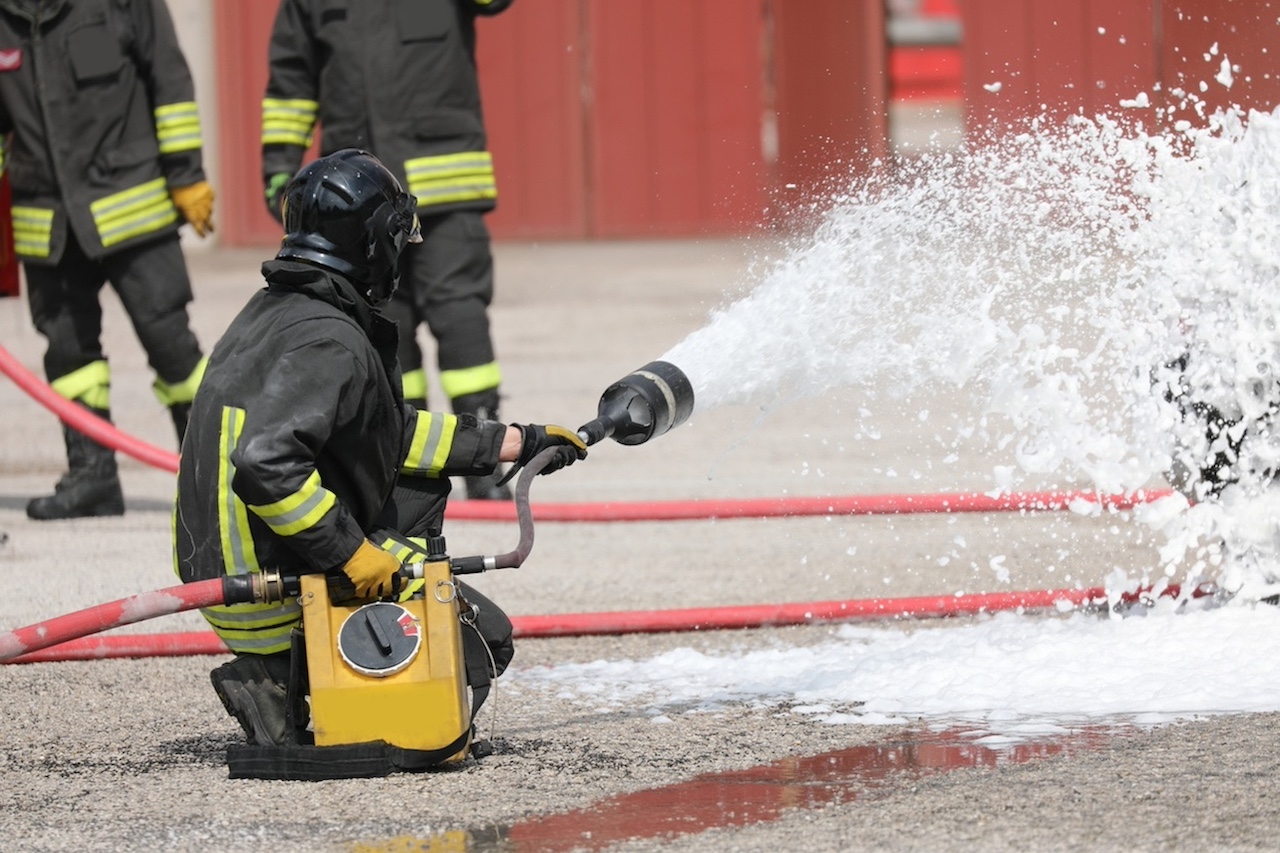By: Emergency Technical Decon Team
PFAS firefighting foam is a danger to both firefighters and the environment. Recently, this topic has grown in relevance as legislative considerations surrounding PFAS, including potential bans on its use, are becoming more significant. In this blog, we’ll look into the background of PFAS, explore the dangers they pose along with associated research findings, discuss the ongoing legislative efforts at departmental, state, and federal levels, and highlight measures to safeguard firefighters from PFAS contamination while preparing for potential bans.
The Historical Context Behind PFAS
Polyfluoroalkyl substances (PFAS) belong to a group of man-made chemicals widely utilized since the 1940s due to their exceptional properties. These compounds were initially celebrated for their resistance to heat, water, and oil, making them valuable in a wide range of consumer products and industrial processes, including firefighting foam.
To fully comprehend PFAS, it is crucial to touch on their history. PFAS were initially hailed as revolutionary materials due to their unique capabilities. PFAS add soil, water, oil, and stain repellency to clothing. They increase the thermal and chemical stability of garments while reducing friction within them, and have been used over the years in many different industries including aerospace, medical, automotive, construction and, yes, firefighting. However, as scientific understanding progressed, concerns arose regarding their potential health and environmental impacts. This led to increased scrutiny and intensified research to better grasp the risks associated with PFAS.
The Dangers of PFAS
Extensive research has shed light on the inherent dangers posed by PFAS, raising significant concerns regarding their impact on human health and the environment. Numerous studies have established links between PFAS exposure and a range of health issues, including liver damage, developmental disorders, hormonal disruptions, and certain types of cancer.
The persistence and bioaccumulative nature of PFAS compounds present substantial challenges. These chemicals can persist in the environment for extended periods, resisting natural degradation processes. PFAS have the ability to accumulate in living organisms, including humans, through the food chain. This persistence and bioaccumulation make them an ongoing threat to ecosystems and human health.
Environmental concerns associated with PFAS are equally alarming. Firefighting foam containing PFAS can contaminate water bodies, resulting in long-lasting pollution. PFAS compounds have been detected in various water sources, including groundwater and surface water, affecting both human populations and wildlife. This ultimately poses risks to drinking water supplies and ecological balance.
Legislative Perspective on PFAS
Recognizing the potential risks associated with PFAS, legislative efforts have been initiated to regulate and manage their use. At the departmental level, fire departments are increasingly adopting stricter guidelines and best practices to minimize PFAS contamination. These measures include training on proper handling, storage, and disposal of PFAS-containing foam to reduce the risk of environmental release.
States and federal entities are also taking action to address the PFAS issue. Several states have implemented regulations or passed legislation to restrict or ban the use of PFAS-containing firefighting foam. These actions aim to protect both firefighters and the environment from the hazards associated with PFAS.
At the federal level, significant efforts are in progress to address PFAS concerns. Provisions in the National Defense Authorization Act (NDAA) address PFAS contamination, particularly in military bases and training facilities where PFAS-containing foam has been extensively used. The Environmental Protection Agency (EPA) actively engages in research, proposing regulations, and supporting the development of PFAS guidelines and standards.
Collaboration between federal agencies, state governments, and fire departments is crucial in establishing effective regulations and guidelines to manage PFAS risks. It is important to continue monitoring scientific advancements and ensure that legislative measures keep pace with emerging research findings.
Ensuring Firefighter Safety
Given the potential risks associated with PFAS, fire departments are proactively implementing measures to protect firefighters from contamination. These include comprehensive training programs on safe handling procedures, emphasizing the use of personal protective equipment (PPE) to minimize direct exposure.
Fire departments are exploring alternatives to PFAS-containing foam, such as PFAS-free firefighting foams among other fire suppression technologies. Research and development efforts are underway to identify effective and environmentally friendly alternatives that maintain firefighting effectiveness without the associated PFAS risks.
To prepare for potential bans on PFAS-containing foam, fire departments should stay informed about evolving regulations and actively engage in the development of guidelines and standards. Proper foam disposal procedures should strictly adhere to in accordance with local regulations and recommendations.
Collaboration and knowledge-sharing among fire departments are crucial to foster the adoption of best practices and ensure the safety of firefighters. Regular communication with manufacturers, industry experts, and relevant agencies can provide valuable insights and help fire departments navigate the transition to PFAS-free firefighting solutions effectively.
By providing comprehensive information on PFAS firefighting foam, its dangers, legislative efforts, and safety measures, we empower firefighters to navigate this complex landscape. Staying informed and prepared is key to ensuring the safety of firefighters and the environment in the face of PFAS-related challenges.
As new technologies, substances, and hazards enter the space, so do new obstacles for the fire service. At Emergency Technical Decon, we’re constantly working to go beyond NFPA standards. Whether or not your department is still using PFAS foam or transitioning to a non-PFAS alternative, one major step to take is to remove any legacy contamination from all firefighter gear.
ETD can help. Follow along with us as we advance our liquid CO2+ technologies to benefit departments across North America, increasing the health and safety of firefighters. Contact our team today for more information on how your department can leverage the power of liquid CO2 turnout gear cleaning.



